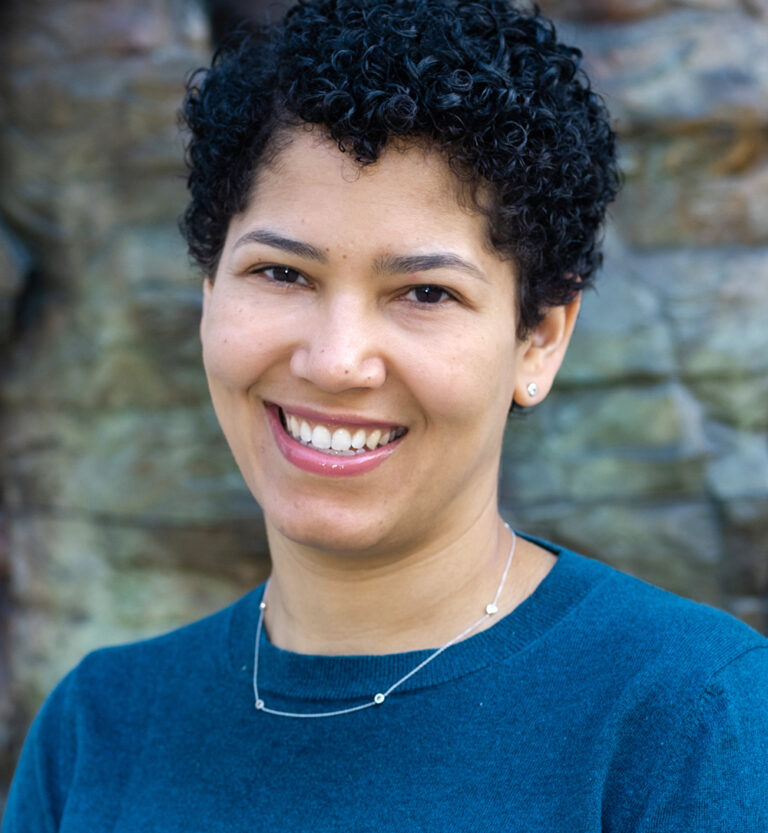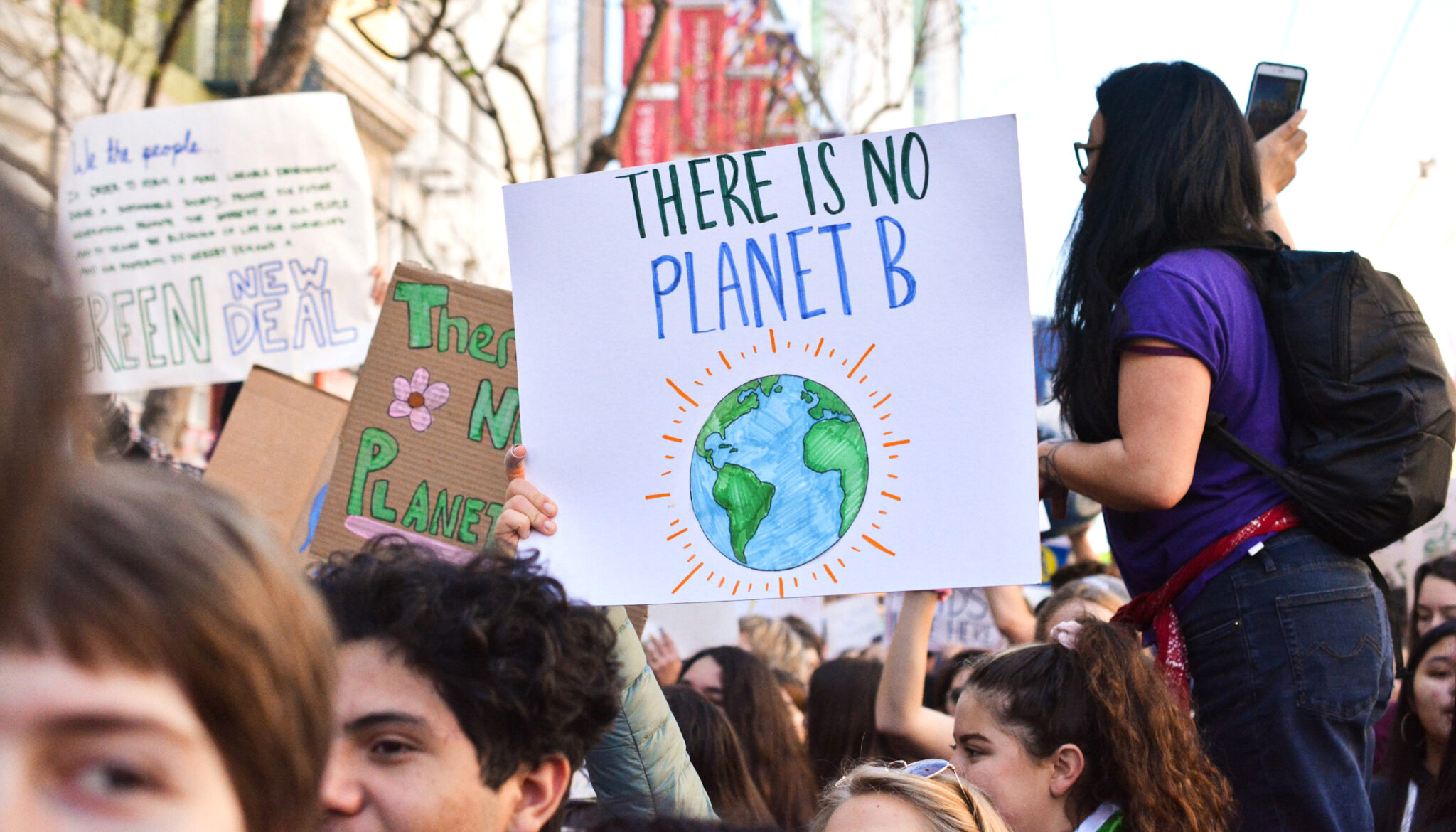When Warnings Never Cease, Can We Still Trust Our Instincts?
At a time when anxiety and threats feel omnipresent, our instinct to react quickly to danger — while powerful — can become unreliable. UC Berkeley political scientist Marika Landau-Wells says there are ways to help us avoid overreacting to false alarms without missing real threats.

This article was adapted from a Berkeley Voices podcast episode. Listen to the original episode here.
UC Berkeley political scientist Marika Landau-Wells first watched the 1990 movie Arachnophobia as a kid. Her mom warned her not to see it: The horror-comedy, about a California town terrorized by a deadly species of spider accidentally imported from a Venezuelan jungle, was PG-13, and Landau-Wells was a lot younger than 13. But some of her friends were going to the theater to see it — at least one of their parents thought it was fine — so she went.

“I now have this deep-seated conviction that all spiders are at least 8 inches in diameter, hairy and can jump,” says Landau-Wells, an assistant professor in the Department of Political Science.
She knows this isn’t true. But her fear of spiders is governed by that mental image, burned into her brain at a young age. When she encounters a spider now, she has to pause and ask herself, “Are my eyes seeing this thing? Is it 8 inches wide? No, it isn’t. Is it probably going to leap at my face? No, it’s not.”
Instead of immediately panicking and killing it, she catches it calmly and she puts it outside.
“Now, I have run into a couple of very large tarantulas since, and that evaluative process gets stuck at the, like, ‘Is it big and hairy?’ point, and then I freak out,” says Landau-Wells. “But most of the time this is not true.”
Landau-Wells says we all encounter problems like this, where we have quick reactions to things we’ve learned to fear. It could be something that is actually dangerous, but it could also be a tiny, non-threatening spider.
Each time, we have to decide what type of problem it is, and then how to respond to it.
In her work, Landau-Wells studies how we make these kinds of decisions and what influences how we act, especially in situations where there’s a lot on the line. Her research has uncovered how fear shapes our perceptions and why it’s so hard to change our minds about what’s dangerous.
Big decisions with big consequences
In her current book project, Seeking Security: Threat Perception and Policy-making in a Dangerous World, Landau-Wells explores how political leaders make decisions when they’re trying to protect their countries, their regimes and themselves.
When a president makes a decision on behalf of millions, tens of millions or hundreds of millions of people, that decision can affect not only their own citizens, but also untold numbers of other people, like those in a neighboring country that gets invaded.
“I’m drawn to those very high-stakes decisions, in part because they have these profound consequences,” she says. “Some of them change the course of history.”

For example, the terror attacks on Sept. 11, 2001, triggered a major reorganization of the U.S. government. Counterterrorism policies were then stitched into everything — from domestic and international surveillance to how we monitor financial systems — that today we take for granted.
The decisions a leader makes in reaction to events like those are based in large part on what they believe is a good way to feel safe, says Landau-Wells.
“How we see the world around us profoundly affects how we act — what we think are good or effective actions,” she says. “And as we all know from our personal experience, we don’t always make the right choices. We don’t always pick actions that succeed. We make mistakes.”
Navigating threats — what’s real and what’s not?
So how can we make better decisions when we feel threatened?
Landau-Wells says it starts with trying to figure out which threats are real, those that truly deserve our attention, and what’s just noise, rhetoric designed to hijack our fear response for someone else’s benefit.
Whether it’s through junky online ads or Facebook posts or the way politicians speak, we’re all constantly exposed to a barrage of messaging that tries to leverage our instinctive response to danger, she explains.
In a recent paper, Landau-Wells found that in order to better regulate our fear responses and grasp how people change their minds about what is dangerous, we need more research on how danger is processed in the brain.

We know that our minds work like a ratchet — it’s easy to switch something on and push it up. But she explains that we don’t know, with any real scientific understanding at least, how to wind it back down. With more research, though, she thinks we could figure out how to more effectively persuade people to stop paying attention to something that is not true or apocryphal and start paying attention to real threats.
But Landau-Wells points out that even when we do recognize something as dangerous, it’s in our nature to ignore things we don’t want to hear.
“Being afraid, being concerned, being anxious is unpleasant,” she says. “More danger in the world is not good news, and people like good news. They don’t necessarily want to hear that everything is out to get them. So incrementally convincing someone of something that is ultimately quite bad news is hard.”
So while we are prepared to learn about danger — especially from trusted sources — we are also motivated to avoid bad news. One way to overcome that hurdle, she finds, often comes from prosocial impulses: “Maybe I won’t go through something that hard for me, but I would do it for someone in my family.”
How we see the world around us profoundly affects how we act … we don’t always make the right choices.
“There’s no silver bullet,” she continues, “that just says, ‘Here’s how you can tell the true from the false, the good from the bad, the people who are trying to manipulate you for their own personal gain from things you really need to do to take care of yourself.’ It’s so hard.”
Leaders around the world have the same problem, says Landau-Wells. They’re always trying to discern which dangers are real and what kinds of threats they pose, and then how to most effectively respond to keep their countries safe or to stay in power or to otherwise achieve their goals.
These calculations are highly complex, and often have unintended consequences.
Can we understand others’ fears?
There’s a common theory in international relations that by putting yourself in another person’s shoes and trying to understand what they perceive as threatening, you can make better-informed decisions about what actions to take.
But in a recent paper, Landau-Wells concludes that this task is actually much harder than previously assumed for people who don’t share a given fear.
“Humans think about other humans a lot,” she says. “We try to infer the intentions and beliefs of other people a lot. It helps us interact with them. People get better at it as they develop through their lifespan.”
But often we hit a ceiling, a barrier to truly understanding why a person is scared of something.
“We aren’t mind readers,” says Landau-Wells. “Even if you have really good intentions, how good are you at figuring out why someone thinks that something’s dangerous? The punchline in the paper is: If you don’t think that thing is dangerous, you’re not going to be a great guesser.”

Say one person believes that climate change is an existential threat — that it has devastating consequences that are playing out before our eyes, with things like catastrophic fires, flooding and species extinction. But another person thinks that climate change isn’t real or that it’s just not that big of a deal, and that other factors are to blame for these disasters.
No matter how much the climate change believer tries to convince the non-believer, the non-believer will have a hard time understanding why the other sees climate change as dangerous if they don’t share that fear.
Even though it’s difficult to understand others’ fears, it doesn’t mean we shouldn’t try, says Landau-Wells. Maybe it even means we need to try a little harder — as individuals and communities, but also as countries trying to work and live together on our one and only planet.
“Either for the sake of cooperation or for better ongoing relationships, to not have your relationships deteriorate, you might want to try to get it right,” she says. “But because we’re not mind readers, and it’s a problem that has many possible answers, you have to put in some effort to make that leap.”
But maybe, she says, we don’t always have to guess. Sometimes it might be a whole lot simpler than that.
Believe what they tell you
As part of the Undergraduate Research Apprenticeship Program, Landau-Wells has worked with nearly a dozen students over the last three years she’s been at Berkeley. Among the documents they read are ones about fear of communism during the Cold War and the U.S. response to terrorism after 9/11.
One thing that often surprises them in the primary source work is how leaders involved in these historical events, the subjects of countless conspiracy theories over the years, didn’t hide their plans.
“They read these sources, and they realize, ‘Wow, these guys just said it. They said what they were thinking, and then they went and did that thing that they said they were going to do.’”
“You don’t need an elaborate conspiracy,” she continues. “When it comes to threats and national security, people think that’s a pretty good reason to do anything. And they don’t hide it nearly as much as you’d think.”
I’m drawn to those very high-stakes decisions, in part because they have these profound consequences. Some of them change the course of history.
Throughout our lives, we learn what to be afraid of. Once we know what to fear, we have instant reactions when we encounter these dangers, like Landau-Wells does when she sees a spider. It’s how we survive.
But this quick response doesn’t always have a positive outcome, she says. We’re inundated with messaging trying to hijack our sense of fear for another’s benefit. Once our brains understand something as dangerous, it’s hard to change.
Landau-Wells says we need more research about how our brains respond to and process fear so that we can learn to regulate our own responses, but also so we can begin to figure out how to persuade others to see a particular fear differently.
Although it’s difficult to understand where other people are coming from, why they’re scared of something that you don’t find scary, it doesn’t mean we shouldn’t try, she says.
And when we feel stuck and we just can’t fathom why a person or leader feels how they do, and in turn, how they might react, Landau-Wells says we should listen to what they tell us and believe what they say, even when we don’t want to hear it.
